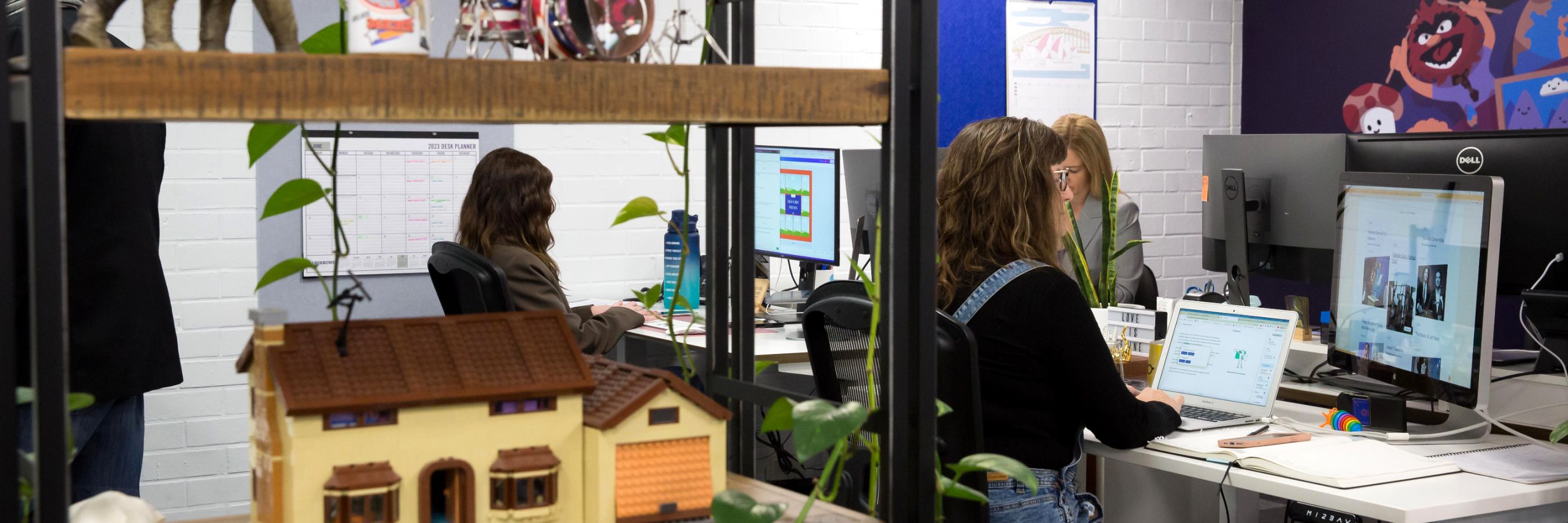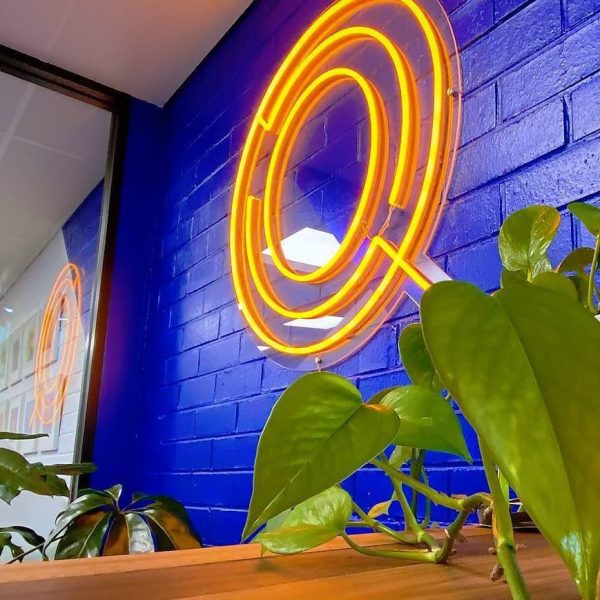Visual communication constitutes a very high percentage of the information we take in and retain. It is therefore imperative that you choose your graphic design carefully so as to reach your target market effectively. At all stages of the buying funnel, people pick up visual cues, and use them, both consciously and subconsciously, in their decision-making processes.
So, whether it is at the early research phases of buying (i.e. consumers finding out what they need to, or should know, before making a buying decision), the middle stages (including information comparison) or the later stages (final retailer/product pruning stages), graphics and visual signals play a vital role.
Design Does Matter
No matter how much someone protests that they are not affected by presentation or the visual aspects surrounding a business or their products (“I don’t care what it looks like”), truly ‘function-over-form’ people are very rare.
Studies show that given the choice between identically functioning products, good presentation design and supporting graphics win the day every time. That is not to say that good visuals will necessary sell someone a standard pocket knife when they are specifically looking for a Leatherman, or Swiss army knife, (there are limits) …. but it can go a long way!
Graphic Design & First Impressions
Successful selling is all about creating perception and belief. Good first impressions are a great start to establishing the perception and belief that your product/service/business are likely to meet the expectations of the consumer, prior to consumers making more cerebral assessments and the comparing of new data. Let me explain the reasoning.
Some studies
A British study relating to the sale of products found that first impressions are 94% design related, whilst a Stanford University study found that the average consumer paid far more attention to graphic design and visual cues than to content.
Some Science
“Why should this be so?”, I hear you ask. Well, there is some science behind it (and theory). The Visual Perception Theory states that in essence, we as humans, make inferences about visual stimuli using higher cognitive information from past experiences or stored knowledge (the saying, “People see what they want to see” springs to mind!).
Full of Inferences
In short, we unconsciously associate visual cues with past experiences to form our immediate perceptions. In this way we are actively constructing our perception of reality based on our current environment and stored information. We make unconscious inferences from what we perceive and establish a “likelihood principle”.
A first impression is an unconscious, quick inference or assumption, not based on all the facts presented, but on the visual aspects!! Hence the importance of the DESIGN!! Bada-bing, bada-boom.
Consuming Assumptions
So, with consumers making quick assumptions about your business and the likelihood of you helping them successfully achieve their desired goals (whether purchasing an item, a service, or gaining information), you really cannot afford a misstep.
At no time do you want your graphic design to give potential customers any negative perceptions that they could then build on, to cut you out of the race early (i.e. before later decision-making processes that evaluate facts). You need to make a positive first impression (full stop).
Graphic Design & Selling
“But first impressions aren’t everything”, you say. And you would be right. However, first impressions can get more people to look closer at your offering (or NOT!). SO, let’s just say you have given all the correct visual cues and you have the consumers’ attention (you’re through the first gate, Yay!). “What next?” You now need to communicate on many different levels, and it all needs to be pulled together in a professional manner. And here again is where graphic design plays an important part.
Good graphic design has the unique ability to sell a product, service or idea through effective visual communication. But let’s explore this statement.
Defining Design
A definition is always a good place to start! Graphic design is the process and art of communicating visually. It uses and combines text, images, information and effective messages in the design of corporate identity, logos, brands, graphics, brochures, sales kits, advertising, newsletters, posters, signs, and any other type of visual communication.
For example, a brochure design that makes watching the grass grow seem exciting, or a business card that entices the recipients to call instead of throwing it away, owe a large part of their success to good graphic design.
Generally speaking, graphic design is applied wherever visual clarity and creativity are used in the presentation of imagery, text, and information.
Principles of Graphic Design
The principles of good graphic design provide suggestions for pleasing and effective ways to arrange graphics and text. This is in addition to the arrangement of individual components within illustrations, logos, and documents. However, the way a graphic designer applies those principles of design determines how attractive your design appears to consumers and how effectively it conveys the desired message to your market segments.
A lot of poor outcomes are the result of ignoring the most important and basic design principles such as balance, alignment, consistency, proximity, contrast, and white space. The selection of the appropriate principles for the communication task at hand is a key skill in good graphic design work, and a defining factor of the overall style.
Setting up Sales
Consumers will infer attributes and qualities of your business, product, or service based upon your visual presentation. This can be on a high-level inference/assessment (just as “clean” can infer organised, or “cluttered” can infer unfocused), or at a more cerebral level, where poor presentation aspects or styles can lead the consumer to infer that they might receive the same level of “non-care” in their interaction with your business. In these cases, the consumer level of brand/product trust declines. Conversely, design that “hits the spot” infers positive aspects to the brand, product or service, setting the stage for a better client engagement.
So, the user’s continued “visual experience” will, to a greater or lesser degree, reinforce or undermine their first impression (which is also visual) and it can determine whether you are setup for having a successful client engagement.
In addition, what your client-facing materials and presentations communicate to a prospective consumer extend beyond style and layout, with the imparting of other information (text, images and other content) needed to “sizzle the sausage” and address the “pain-points” of your market segments. This is where a good graphic designer can seamlessly merge with, and enhance, your marketing information or sales pitch.
Ok, so now you can see why good graphic design is important. If done properly, it can help you gain better client engagement and make sales!
Some hard questions
There are many hard questions that need to be asked (by you and us) about what your client-facing materials are communicating to your prospects.
- What are your designs communicating to your different market segments?
- What do prospective consumers think and feel about your business, product, or service?
- Does your presentation material show that your business cares about your customers?
- Does your graphic design make a great first impression, or have you created a barrier to your business success?
- What are the desires and objectives of your consumers and does your material address these?
- Are you addressing all the consumer pain points?
- Could your materials infer any negative attributes relative to your market segments?
- What positive aspects or associations are being inferred?
There are many more questions that need to be asked, including whether your designs are making some of the more common strategic mistakes of older approaches or attitudes.
Strategic mistakes in graphic design
One common mistake is having marketing material that is too focused on what your business wants to say or achieve, rather than focusing on what is important to the consumer. In today’s markets, an “outside looking in” approach is needed, rather than “inside looking out”.
It is important to understand what your consumers desire holistically in their transactions with your business. This is the difference between the traditional customer-focused sales approach and the more modern customer-centric company behaviour. Once upon a time the focus was on what could be done to get the most out of the consumer. Nowadays the focus is on helping consumers achieve their goals and having a successful and indeed pleasurable interaction in the process. A focus on customer desires has been shown to result in increased customer loyalty and support, and a larger customer base. This of course translates into greater revenue and profits… and you get six steak knives!
Your graphic design and presentation materials need to reflect this customer-centric focus, by helping create a customer experience that ticks all the boxes and is both unique and enjoyable.
Professional Designers
Whether your visual communication is successful is, to a large part, reliant on whether you have engaged a group of professionals who are competent, can address all the elements of successful graphic design and have a focus on marketing objectives and strategies.
As with all good visual communication there is little room for cutting corners. Setting a budget that is too low, or engaging an agency that charges too little, decreases the chance of a professional result. It may mean that you get an ineffective outcome, or at worst, it may negatively affect your brand in the marketplace. In either case it will end up costing you far more money in the long term, not only to fix the problems, but through lost revenue. Remember, you are spending money to make money. And …yes, we are in our business to help you make money.
Our Graphic Designers
Our graphic designers use numerous methods of visual communication in their professional practice and employ a range of aesthetics, cognitive skills and crafts, including page layout, typography, and visual arts. Their primary tools are their creative minds and their use of critical, observational, quantitative and analytical thinking.
When it comes to graphic designers in Adelaide you can't go past Quisk Design studio's offering of effective and clever design and branding.
We offer professional Graphic Design for:
- Logo Design
- Tag-line / Slogan Creation
- Animated Logo Design
- Business Card Design
- Letterhead Design
- Envelope Design
- Email Signature Design
- Graphic Style Guides
- Wine Label Design
- Brochure Design
- Presentation Folder Design
- Sales Kit Design
- Product & Package Design
- Advertising Design
- Print Design
- Annual Report Design
- Imagery
- Content Development
- ...and more
For professional graphic design that is effective and gets results, contact us now!


